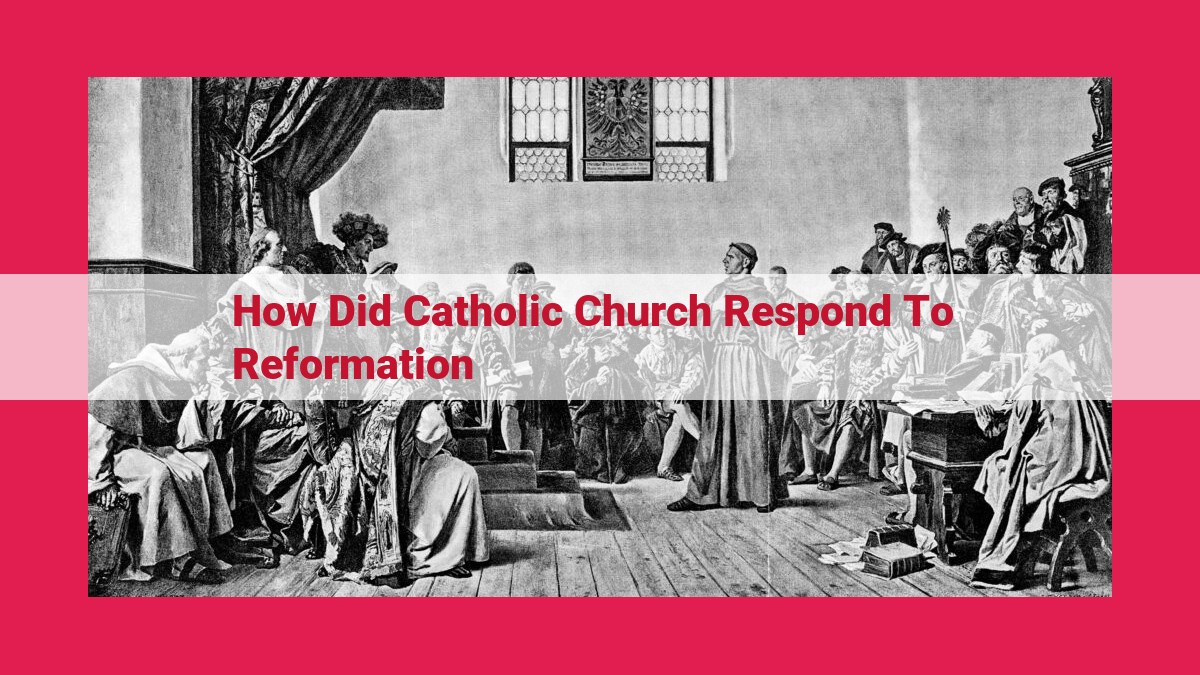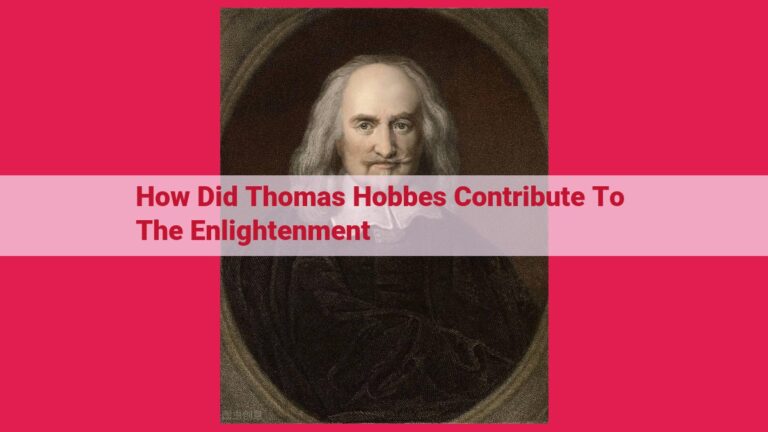Post-Reformation Catholic Countermeasures: Liturgy, Dogma, And The Rise Of The Jesuits

In response to the Protestant Reformation, the Catholic Church implemented multifaceted reforms. Through the Council of Trent, it overhauled liturgy, dogma, and discipline. The Index of Forbidden Books and the Roman Inquisition suppressed perceived threats to Catholic orthodoxy. Papal Supremacy was reaffirmed, while the papacy underwent moral and administrative reforms. The Jesuit Order emerged as a spiritual and missionary force. Mysticism and Baroque art and architecture became integral to Catholic devotion, glorifying God and promoting religious fervor.
The Council of Trent: A Watershed Moment in Catholic Reformation
In the midst of the tumultuous era known as the Protestant Reformation, the Catholic Church embarked on a comprehensive journey of renewal known as the Counter-Reformation. At its heart was the Council of Trent, a series of 19 ecumenical councils held between 1545 and 1563. Convened by the Papal Legate Cardinal Reginald Pole under the authority of Pope Paul III, the Council’s mission was to address the doctrinal and disciplinary challenges facing the Catholic Church.
The Council’s legacy is profound. Its landmark reforms not only redefined Catholic doctrine and practice but also set the stage for the Church’s resurgence in the centuries that followed. These reforms spanned a wide range, from changes to liturgy (the order of worship services) to dogma (the Church’s fundamental beliefs) and discipline (rules governing the conduct of the clergy and laity).
Perhaps most notably, the Council standardized the Church’s liturgical practices, ensuring uniformity in the celebration of Mass and other sacraments. It also clarified key doctrines, such as the nature of salvation, the sacraments, and the Eucharist, reaffirming their importance as cornerstones of Catholic faith. Additionally, the Council tightened ecclesiastical discipline, introducing stricter rules for the clergy and establishing mechanisms for enforcing them.
These reforms had a significant impact on the Catholic Church. They helped to address the concerns raised by the Protestants, strengthened the Church’s doctrinal authority, and bolstered its administrative capabilities. The Council of Trent thus became a pivotal moment in the Catholic Reformation, a watershed from which the Church emerged with a renewed sense of purpose and a clear path for its future.
The Index of Forbidden Books: Controlling Harmful Literature in the Catholic Reformation
The Catholic Church in the 16th century faced a significant challenge in controlling the spread of ideas that were deemed heretical or morally dangerous. In response, the Church established the Index of Forbidden Books, a comprehensive list of works that Catholics were forbidden from reading or possessing.
The purpose of the Index was multifaceted. It aimed to protect the faithful from exposure to ideas that could potentially undermine their belief in Catholic doctrine. It also served to suppress the dissemination of works that promoted Reformist or heretical ideas, which were seen as a threat to the Church’s authority and the stability of society.
The implementation of the Index was a complex process that involved the cooperation of various Church authorities. The initial Index was published in 1559 and was periodically revised and updated to add new works that were banned. Copies of the Index were distributed to booksellers, printers, and other members of the clergy, who were responsible for enforcing its provisions.
Enforcement of the Index was carried out primarily by the Roman Inquisition, a powerful tribunal that played a central role in the suppression of heresy. The Inquisition could investigate individuals suspected of possessing or reading forbidden books, and it had the authority to impose severe punishments on those found guilty.
The Index of Forbidden Books had a far-reaching impact on the intellectual and cultural life of Europe. Banned works included not only religious texts but also scientific, historical, and literary works that were deemed to contain harmful or offensive material. The Index restricted access to new ideas and hindered the spread of knowledge, particularly in fields that were critical of the Church’s authority.
The Roman Inquisition: Enforcing Church Authority
In the face of religious upheaval during the Protestant Reformation, the Catholic Church sought to consolidate its authority and combat dissent. Enter the Roman Inquisition, a formidable ecclesiastical tribunal that emerged as a powerful tool for suppressing heresy, enforcing the Index of Forbidden Books, and maintaining Papal Supremacy.
The Inquisition’s origins can be traced back to the 13th century, when the threat of heresy posed a significant challenge to the Church. As the Reformation gained momentum in the 16th century, Pope Paul III established the Roman Inquisition in 1542, granting it sweeping powers to investigate and punish religious deviants.
The Inquisition targeted not only heretics who openly challenged Church teachings but also suspected dissenters, potential converts, and anyone who possessed forbidden literature. Its proceedings were often conducted in secret, with accused individuals subjected to rigorous interrogations and the threat of torture. Confessions, often coerced under duress, could lead to severe punishments, including public humiliation, imprisonment, or even execution.
The Inquisition played a crucial role in enforcing the Index of Forbidden Books, established in 1559. This list of prohibited publications included works deemed to be heretical, morally offensive, or subversive to Church authority. The Inquisition vigilantly monitored the circulation of these books, confiscating and burning copies found in the possession of suspected individuals.
Furthermore, the Inquisition acted as a guarantor of Papal Supremacy. It ruthlessly suppressed any challenge to the Pope’s authority, ensuring that the Catholic Church remained firmly under the control of the Papacy. By eliminating dissent and safeguarding the Church’s teachings, the Inquisition served as a formidable instrument of religious control and ecclesiastical power during a tumultuous period in Christian history.
Papal Supremacy: Reaffirming the Pope’s Authority
In the tumultuous era of the Catholic Reformation, the concept of Papal Supremacy emerged as a defining pillar of the Church. This doctrine, dating back to the first century, held that the Bishop of Rome, known as the Pope, possessed supreme authority over all matters of faith and discipline.
The Protestant Reformation, with its challenge to papal authority, ignited a crisis for the Catholic Church. However, the Council of Trent, convened in response to the Reformation, emerged as a turning point in reaffirming the Pope’s supremacy. Through a series of decrees, the Council reaffirmed the Pope’s role as the Vicar of Christ, endowed with the power to define dogma, guide the Church, and enforce its teachings.
To strengthen papal authority, the Council also instituted measures such as the Index of Forbidden Books, which restricted access to literature deemed heretical or harmful. The Roman Inquisition became the Church’s instrument of enforcement, suppressing dissent and maintaining order within its ranks.
The reaffirmation of Papal Supremacy had profound implications for the Catholic Church. It centralized authority in Rome, reducing the influence of local bishops and ensuring that the Pope’s teachings were disseminated throughout the Church. It also reinforced the Pope’s role as the guardian of orthodoxy, protecting the Church from doctrinal deviations.
In the centuries that followed the Council of Trent, Papal Supremacy became an unyielding principle in Catholic doctrine. It shaped the Church’s structure, governance, and theological perspective, and remains a fundamental aspect of the Catholic faith to this day.
Reformation of the Papacy: Cleaning House
The Question of Corruption
During the Renaissance, the Catholic Church faced widespread criticism for its corruption and abuse of power. Popes had become more focused on worldly pursuits than their spiritual duties, leading to a decline in the Church’s moral authority.
A New Era of Reform
Recognizing the need for change, the Council of Trent (1545-1563) initiated a series of reforms aimed at cleaning house within the Church. These measures targeted both the administrative and moral aspects of the institution.
Administrative Reforms
The Council established new rules and procedures to streamline the Church’s administration. It limited the power of bishops and curbed* the sale of **indulgences—a practice that had been criticized for encouraging people to buy their way out of sin.
Moral Reforms
Equally important were the moral reforms. The Council prohibited clergy* from holding multiple **benefices (positions that brought income) and from engaging in simony (buying or selling Church offices). It also instituted a process of regular visitations to ensure that priests were living up to their responsibilities.
A Renewed Focus on Spirituality
Beyond these specific reforms, the Council of Trent also placed a new emphasis on spirituality and devotion within the Church. It encouraged bishops to live pious lives and to be models for their flocks. It also promoted popular piety, such as rosary devotions and pilgrimages.
The Impact of Reform
The reforms of the Council of Trent had a profound impact on the Catholic Church. They helped to clean house, restoring the Church’s moral authority and reinvigorating its spiritual life. They also laid the foundation for the Church’s **renewal* and resurgence in the **centuries* that followed.
The Jesuit Order: A Spiritual and Missionary Force
In the aftermath of the Protestant Reformation, the Catholic Church sought to reinvigorate its spiritual and intellectual presence. From this need emerged the Jesuit Order, founded by the Spanish soldier turned priest Ignatius of Loyola in 1540.
Ignatius’s military background influenced the order’s structure and discipline. Jesuits were recruited from elite universities and underwent rigorous training in theology, philosophy, and the humanities. Their mission was twofold: to combat heresy and to spread Catholicism beyond Europe.
The Jesuits emphasized education as a primary means of achieving these goals. They established a network of colleges and universities across Europe, Asia, and the Americas. These institutions instilled in students strong Catholic values while providing a humanistic education that emphasized science and reason.
The Jesuits were also formidable missionaries. They ventured into distant lands, spreading Catholicism in regions like Japan, China, and the Americas. Their zealousness and cultural adaptability allowed them to overcome language barriers and convert thousands of people.
The Jesuit Order played a crucial role in the Catholic Reformation. Its emphasis on education, missionary work, and spiritual discipline helped to revitalize the Church and strengthen its position in the face of Protestant challenges. Today, the Jesuit Order continues to be a vibrant force in the Catholic Church, dedicated to education, social justice, and the spread of the Gospel.
Mysticism: A Personal Encounter with the Divine
In the realm of Catholicism, mysticism has played a profound role, allowing individuals to experience a direct and personal connection with the divine. This phenomenon was particularly prevalent within the Jesuit Order, a religious society founded in the 16th century.
Jesuit mystics sought to transcend the boundaries of reason and explore the depths of their spiritual lives. Through prayer, meditation, and contemplation, they aimed to cultivate a profound intimacy with God. These mystical experiences were not mere hallucinations or psychological tricks but rather transformative encounters that left an indelible mark on their souls.
The Influence on Art and Architecture
The mystical experiences of Jesuit mystics profoundly influenced the development of Baroque art and architecture. This artistic style, characterized by its lavish ornamentation, emotional intensity, and dramatic lighting, sought to evoke a similar sense of awe and transcendence in its viewers.
Baroque churches, with their soaring ceilings and intricate sculptures, were designed to create an environment conducive to contemplation and spiritual connection. The use of light and shadow, often in the form of stained glass windows, served to illuminate the divine presence and inspire a sense of wonder.
The Importance for Catholicism
Mystical experiences have always held great importance in Catholic tradition, as they provide a direct and personal encounter with God. Jesuit mysticism, with its emphasis on humility and surrender, played a key role in the renewal and revitalization of the Catholic Church during the Counter-Reformation period.
The writings and teachings of Jesuit mystics, such as Ignatius of Loyola, Teresa of Avila, and John of the Cross, continue to inspire and guide countless individuals on their spiritual journeys. Through their mystical encounters, these saints offer a timeless testament to the power of the human soul to connect with the divine.
Baroque Art and Architecture: Glorifying God’s Grandeur
The Baroque era, spanning from the late 16th to the mid-18th century, witnessed a dramatic shift in the artistic and architectural landscape. Driven by the Council of Trent’s call for a more vibrant and emotive expression of faith, Baroque art and architecture emerged as a powerful tool to glorify God and promote religious devotion.
Distinctive Features of Baroque Art:
- Intense Emotions and Movement: Baroque art captured the dynamic energy and emotions of religious experiences. Figures burst forth from paintings, their gestures expressive and their faces etched with a palpable intensity.
- Dynamic Composition: Sculptors and painters used diagonal lines, curves, and asymmetrical arrangements to create a sense of movement and drama. The compositions often seem to burst forth from their frames, engaging the viewer in the emotional and spiritual journey.
- Rich Color and Texture: Bright, vibrant colors and opulent fabrics saturated Baroque artworks. The contrasting textures of marble, wood, and gilt added depth and tactile appeal.
Distinctive Features of Baroque Architecture:
- Dramatic Scale and Detail: Baroque churches were colossal in scale, their facades adorned with intricate carvings and sculptural elements. The interiors boasted towering columns, sweeping arches, and elaborate frescoes that created a sense of awe and grandeur.
- Light and Darkness: Architects masterfully manipulated light to enhance the emotive impact of Baroque spaces. Vaulted ceilings and stained glass windows allowed natural light to flood in, creating dramatic contrasts and mystical effects.
- Ornate Decoration: Every surface was adorned with intricate embellishments, from gilded moldings to opulent chandeliers. The ornamentation served as a visual reminder of the glory of God and the wealth of the Church.
Baroque art and architecture served a profoundly religious purpose. By capturing the emotional intensity of faith and showcasing the grandeur of the Catholic Church, these masterpieces encouraged devotion, awe, and a sense of connection with the divine. They became symbols of the Church’s power and a testament to the enduring legacy of the Catholic faith.




